“El Anatsui: Five Decades,” currently on view at Carriageworks in Sydney, is the first large-scale exhibition in Australia showcasing the Ghanaian artist’s varied works. Over 30 pieces are on display including woodcarvings, drawings, sculptures, ceramics, as well as his iconic tapestry-esque installations. Originally born in Anyako, Ghana and now residing in Nsukka, Nigeria, Anatsui’s works hinge upon the colonial and post-colonial relations that have left an indelible mark on the culture and economy of Africa. Working largely with repurposed materials, Anatsui transforms liquor bottles and cans—originally produced in Africa as a major export to Europe—to indicate the African history of global exchange and consumption.
As part of the former railway carriage and blacksmith workshops of the Eveleigh Rail Yards, Carriageworks’ 19th-century industrial feel lends itself beautifully to showcase Anatsui’s works. The iron and brick details of the gallery space add a textural contrast to the smooth metalics of Anatsui’s tapestries, while ample natural lighting further illuminate his pieces. Tiled Flower Garden, which is composed of intricately woven aluminum from cans of Dark Sailor, King Solomon, and 007, tells the story of European trade, mapping the introduction of alcohol into Africa and its eventual use in the trans-Atlantic slave trade. Other works ,such as his pottery, include more traditional forms of African culture such as Anatsui’s native language Ewe and Adinkra symbols, which are used to convey an idea or concept. By pairing overtly traditional visual culture with his contemporary tapestries, Anatsui creates a complex body of work that encapsulates Africa’s past and present. At a distance, the artist’s work is an exquisitely mesmerizing visual statement; it is only when we move closer that we catch a glimpse of the historied parts that create the contemporary whole.
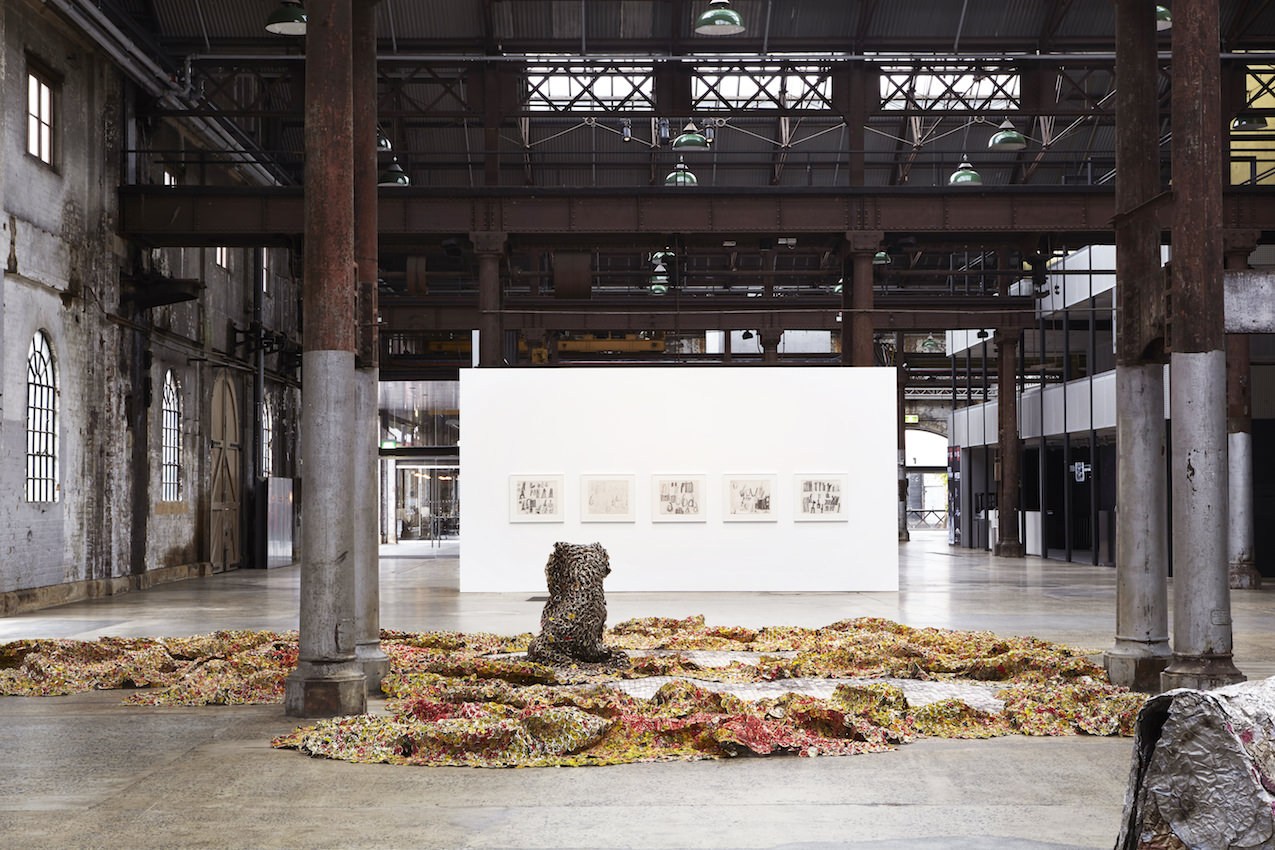
EL ANATSUI, FIVE DECADES, INSTALLATION VIEW, 2016, CARRIAGEWORKS, SYDNEY. COMMISSIONED AND PRESENTED AS A SCHWARTZ CARRIAGEWORKS PROJECT IN ASSOCIATION WITH SYDNEY FESTIVAL. IMAGE: ZAN WIMBERLEY
Whitewall spoke with Carriageworks curator Beatrice Gralton to learn more about Anatsui’s first large-scale exhibition in Australia.
WHITEWALL: Why did you choose El Anatsui as the first artist to show as a part of the inaugural Schwartz Carriageworks project?

EL ANATSUI, FIVE DECADES, INSTALLATION VIEW, 2016, CARRIAGEWORKS, SYDNEY. COMMISSIONED AND PRESENTED AS A SCHWARTZ CARRIAGEWORKS PROJECT IN ASSOCIATION WITH SYDNEY FESTIVAL. IMAGE: ZAN WIMBERLEY
BEATRICE GRALTON: We have been following Anatsui’s practice for a number of years, and were very interested in showing his work at Carriageworks and introducing it to new audiences in Australia. For the inaugural Schwartz Carriageworks project we wanted to present an ambitious exhibition and were delighted when Anatsui accepted our offer to show here. His works are so responsive to their locations, and the spaces of Carriageworks afforded a unique and exciting opportunity.
WW: El Anatsui’s work is highly reflective of Ghanian and Nigerian cultural history. As Anatsui’s first major exhibition in Australia, how has his work resonated with Australian audiences?
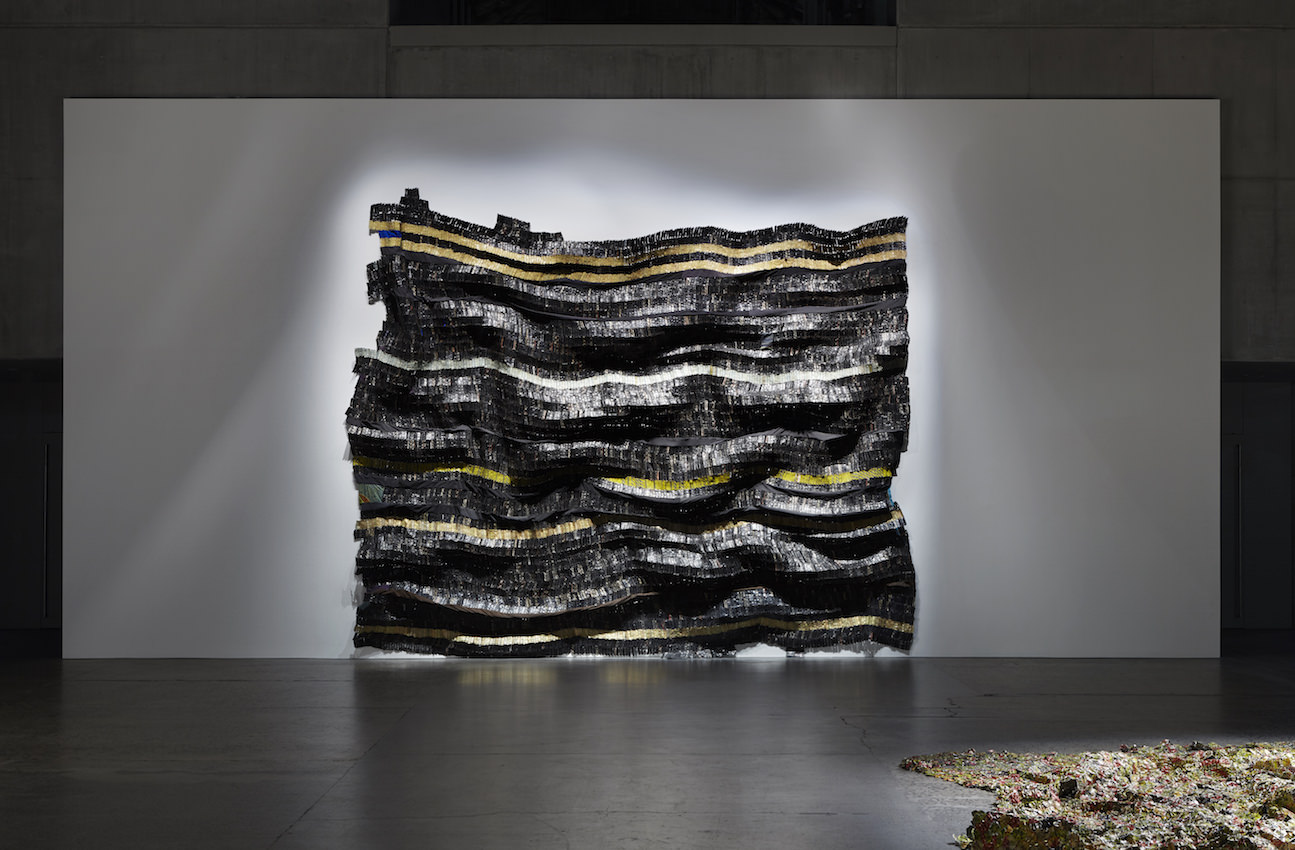
EL ANATSUI, FIVE DECADES, INSTALLATION VIEW, 2016, CARRIAGEWORKS, SYDNEY. COMMISSIONED AND PRESENTED AS A SCHWARTZ CARRIAGEWORKS PROJECT IN ASSOCIATION WITH SYDNEY FESTIVAL. IMAGE: ZAN WIMBERLEY
BG: Australian audiences are fascinated with the work as it operates on so many levels. There is the initial “wow” factor at the scale and splendor of the work, the materiality and sculptural quality of the objects. This is followed by a fascination with the intricacy and detail within each of the works, the consideration of composition and fabrication. I’ve found that Australian audiences are very responsive to the historic and sociological aspects of the work, they are very interested in Anatsui’s own history and the way his art is informed by the vernacular and culture of Ghana and Nigeria. This applies across his materials, the formal arrangement of the works and the context within which the work is shown and received.
WW: Could you briefly explain the organization behind the show? Was it most important to curate the works thematically, chronologically, or by medium?
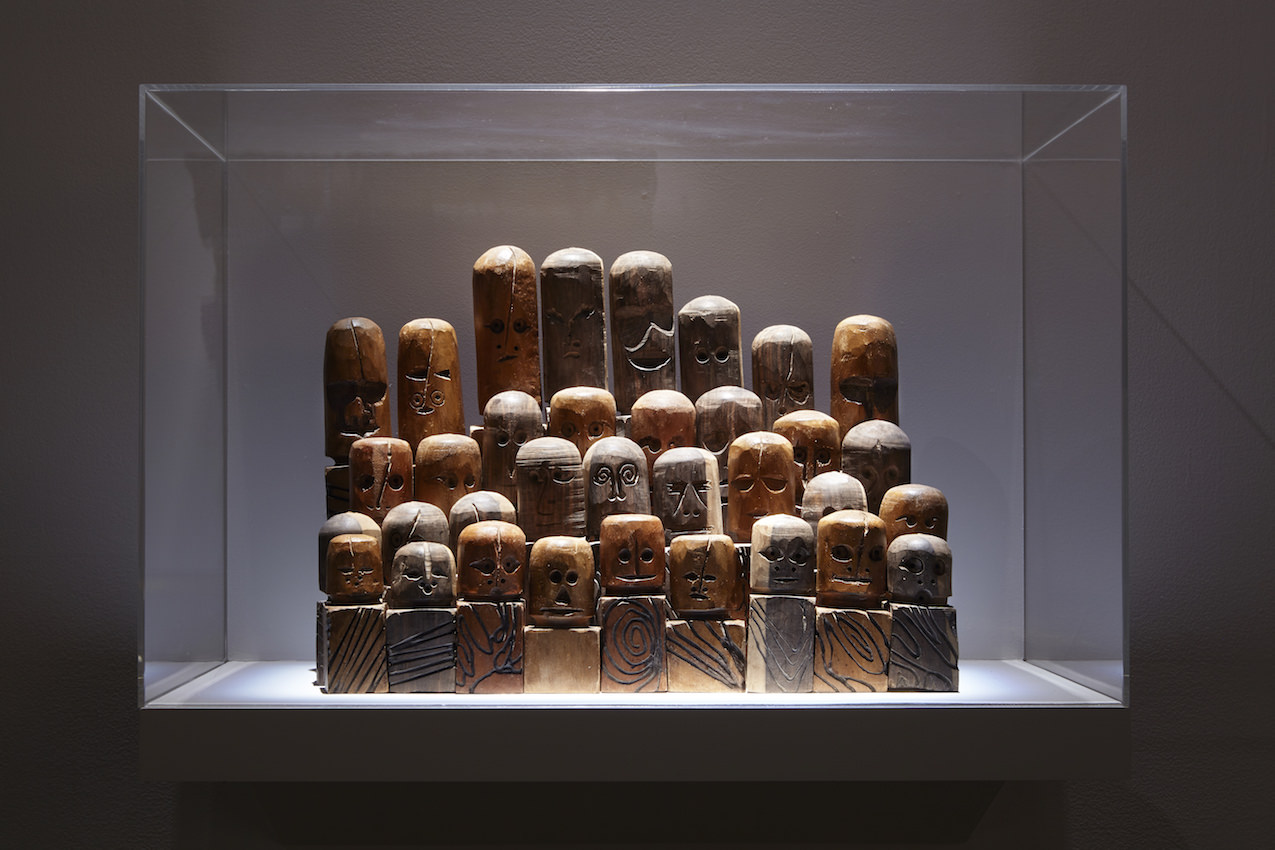
EL ANATSUI, FIVE DECADES, INSTALLATION VIEW, 2016, CARRIAGEWORKS, SYDNEY. COMMISSIONED AND PRESENTED AS A SCHWARTZ CARRIAGEWORKS PROJECT IN ASSOCIATION WITH SYDNEY FESTIVAL. IMAGE: ZAN WIMBERLEY
BG: The curatorial framework for the exhibition was built on the idea of Anatsui’s practice as a continuum. As the first solo exhibition of his work in Australia we thought it was important for the exhibition to provide a solid introduction into the breadth and variety of Anatsui’s work—it is not intended to be a comprehensive retrospective—which would be a vastly different undertaking. We wanted to present the range of mediums Anatsui works across from ceramics, sculpture, drawings, wooden assemblages and large-scale installations. For the presentation of the exhibition we wanted to fracture the structure of chronology and draw out the relationships that exist between the works, rather than plot a history of sorts.
I think it’s the themes that run through the works, which ultimately give the exhibition form. These include an awareness of the fragility and transience of existence; a belief that damaged or discarded objects can be transformed into something new; a working method that incorporates multiple sources and parts to form a whole; and the importance of language as a metaphor to expand the interpretation of art.
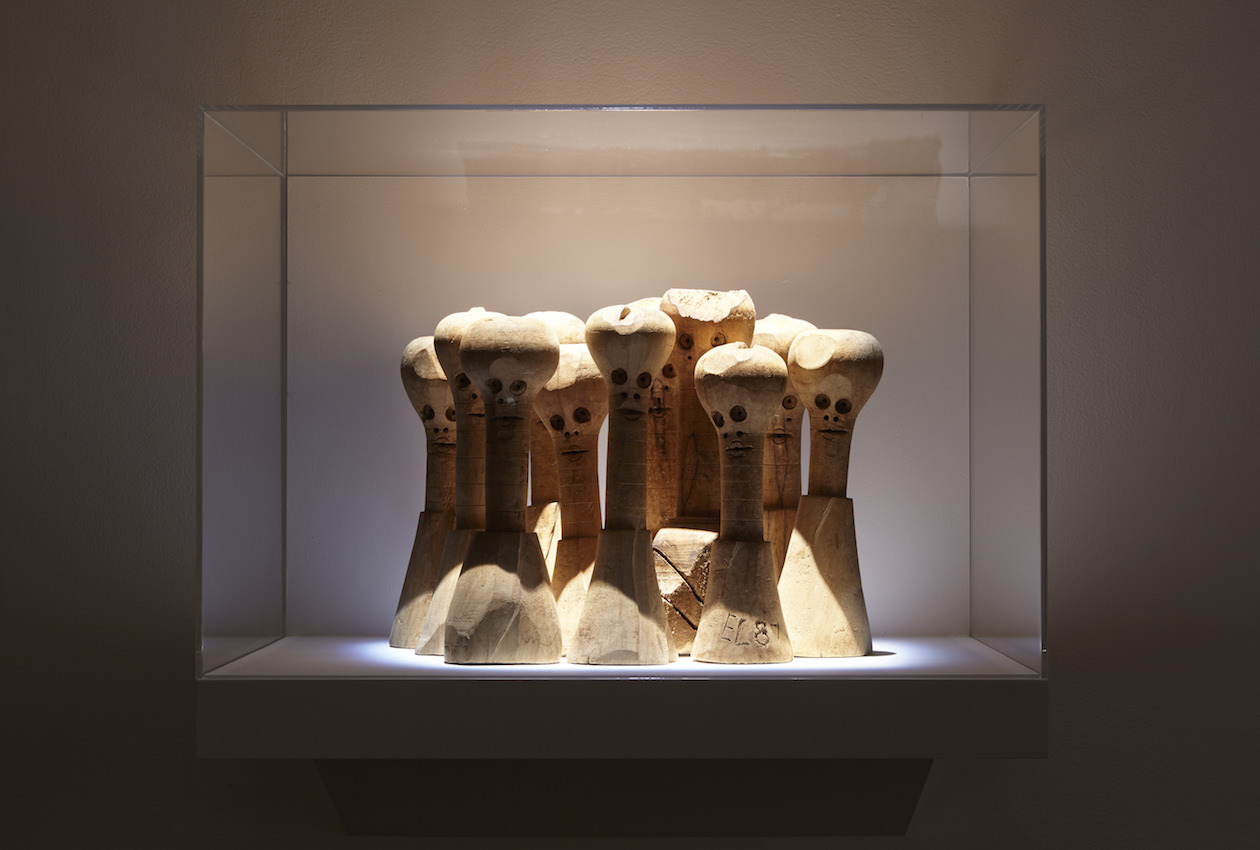
EL ANATSUI, FIVE DECADES, INSTALLATION VIEW, 2016, CARRIAGEWORKS, SYDNEY. COMMISSIONED AND PRESENTED AS A SCHWARTZ CARRIAGEWORKS PROJECT IN ASSOCIATION WITH SYDNEY FESTIVAL. IMAGE: ZAN WIMBERLEY
WW: How do the different media influence the overall narrative of the exhibition?
BG: The inclusion of different media really speaks to the expansive and experimental nature of Anatsui’s practice over 50 years, and how he has continually repurposed materials accessible to him to explore his interests. I see the wooden wall assemblages he was making during the 1980s and 1990s as compositional experiments for the metal wall works from the early 2000s, especially in the way sections of the works are able to be swapped out and reconfigured. In 2003-2004 there was a surge in activity using the repurposed metal objects including the bottle tops, newspaper printing plates and found objects and this is evident by works including Adinkra Sasa (2003), Waste Paper Bags (2004), and Open(ing) market (2004)—all of which are formally quite different yet address Anatsui’s concerns with contemporary life in post-colonial Africa.
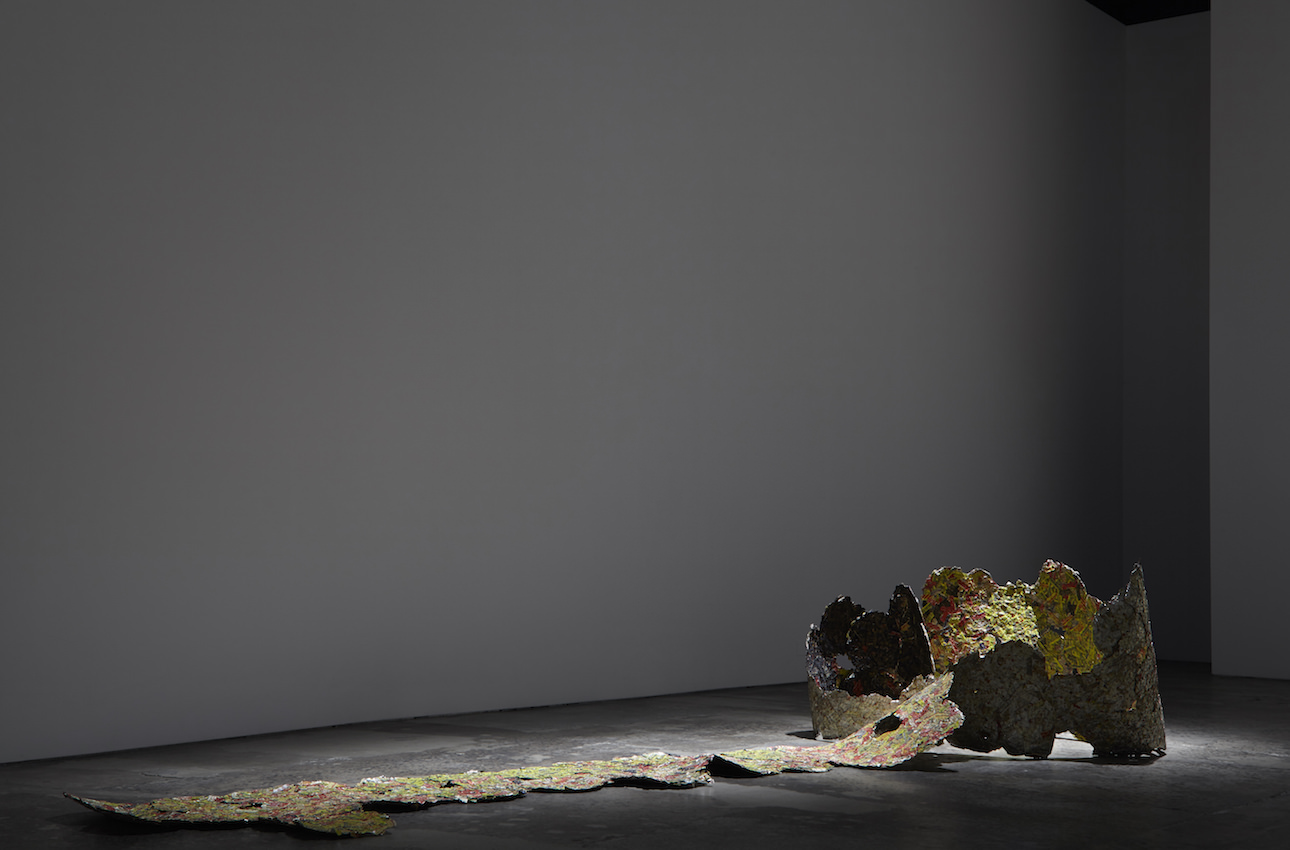
EL ANATSUI, FIVE DECADES, INSTALLATION VIEW, 2016, CARRIAGEWORKS, SYDNEY. COMMISSIONED AND PRESENTED AS A SCHWARTZ CARRIAGEWORKS PROJECT IN ASSOCIATION WITH SYDNEY FESTIVAL. IMAGE: ZAN WIMBERLEY
In 1998 the chance discovery of a garbage bag of Nigerian alcohol bottle tops presented Anatsui with a new material with which he could produce an extraordinary range of effects, and when he started to incorporate the bottle tops into his work (in the early 2000s) he developed his now iconic style. For the last fifteen years Anatsui has flattened, folded and bound together the labels from whiskey, wine, rum, gin, brandy, vodka and schnapps—all produced in West Africa—to create an incredible body of work, and there is certainly no sign of him slowing down. The shimmering palette of these labels and evocative brand names including Dark Sailor, King Solomon, 007, Chairman and Makossa added a new idiom to Anatsui’s work, picking up from where he had formerly been incorporating the Ghanaian Adinkra symbols. Again, these materials address the stories of cultural exchange, consumption, colonialism and migration particular to his home and also provide him with a limitless potential for art making. The bottle tops have enabled an expansion of Anatsui’s practice where he has continued to pursue his interests in abstraction, in the landscape, topography and cartography.
Anatsui is still working across media today, he doesn’t solely work with the bottle tops. At the moment he is building a new studio in Nsukka, Nigeria, which will enable him to make more ambitious work, as well as return to ceramics, and continue making the wooden sculptures that he has made for many years.

EL ANATSUI, FIVE DECADES, INSTALLATION VIEW, 2016, CARRIAGEWORKS, SYDNEY. COMMISSIONED AND PRESENTED AS A SCHWARTZ CARRIAGEWORKS PROJECT IN ASSOCIATION WITH SYDNEY FESTIVAL. IMAGE: ZAN WIMBERLEY
WW: Did you consult with the artist about the layout or direction of the show? If so, could you describe what it was like to work with Anatsui?
BG: Anatsui is incredibly generous and allows curators and installers a lot of freedom when it comes to presenting his work. This is both hugely exciting and quite frightening as you want to ensure the works are shown to their best capacity while also taking some risks and allowing the work to be read in a new light.
We worked very closely with Jack Shainman Gallery in New York and they were able to ask him specific questions about the works on our behalf. When Anatsui arrived in Australia we toured the exhibition together and thankfully he didn’t have any major changes. His method of working is very intuitive and his advice on the installation was not to over think things, to let the objects tell the story.
“El Anatsui: Five Decades” was on view at Carriageworks from January 7th—March 6th as part of the Sydney Festival, and marked the first Schwartz Carriageworks project.








